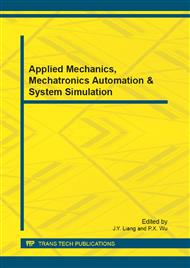p.162
p.167
p.171
p.175
p.179
p.183
p.189
p.193
p.197
Preparation and Characterization of Layer Structured Porous Chitosan Scaffold for Tissue Engineering
Abstract:
In this study, layer structured porous chitosan scaffold was successfully fabricated using thermal induced phase separation method. The scaffold had a layer structure with interconnective pores (50- 300 μm) and high porosity (>90%) using citric or acetic acid as the solvent. However, the results of compressive modulus of the scaffold showed that acetic acid was a better choice, and the compressive modulus of scaffold increased with chitosan concentration in acetic acid. The scaffold is very promising for tissue engineering.
Info:
Periodical:
Pages:
179-182
Citation:
Online since:
September 2012
Authors:
Keywords:
Price:
Сopyright:
© 2012 Trans Tech Publications Ltd. All Rights Reserved
Share:
Citation:


